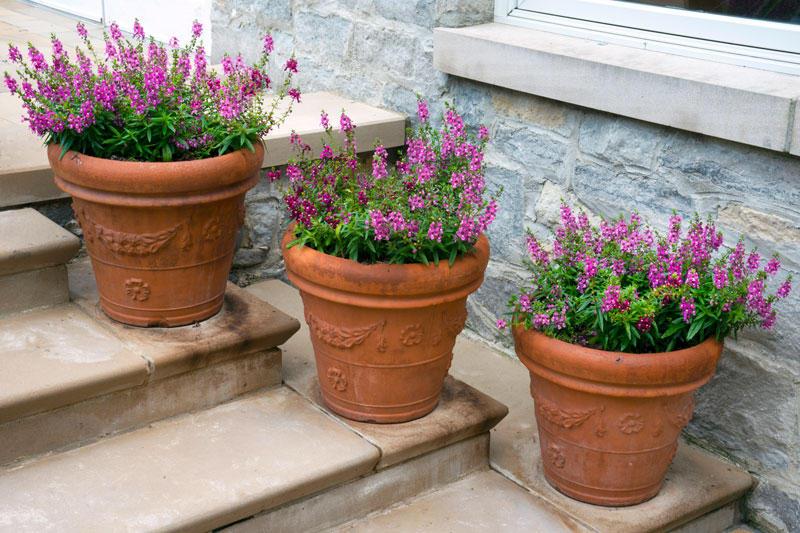A New Tool for the Landscape

As garden plants go, angelonias have barely reached legal age. Oh, we knew about them 60-70 years ago, and 30-40 years ago a few growers had them in greenhouse collections, but it wasn’t until the early 2000’s that they made their real run for the money. Let’s take a look at why they’ve become so popular so very quickly.

Facts to know…
• Scientific name: Angelonia angustifolia
• Plant family: Plantaginaceae (formerly Scrophulariaceae)
• Common names: Angelonia, Summer Snapdragon
• Native home: Mexico and West Indies
• Lighting preference: Sun to light shade
• Growth habit: Upright to 12 to 16 in. tall, may become bushy but will not require staking
• Flower colors: White, pink, purple
• Soil preference: Highly organic
• Fertilizer needs: Keep plants growing actively by feeding with a diluted water-soluble, high-nitrogen food every couple of weeks, more frequently in pots than in garden beds.
• Maintenance requirements: Few, if any. Plants will not require deadheading to remove spent blooms. I’ve not encountered any insect or disease problems with my own angelonias.
• The plants are annuals that are best planted into large patio pots or massed in beds in late April, May, or June for summertime displays. Nurseries have good supplies now.


